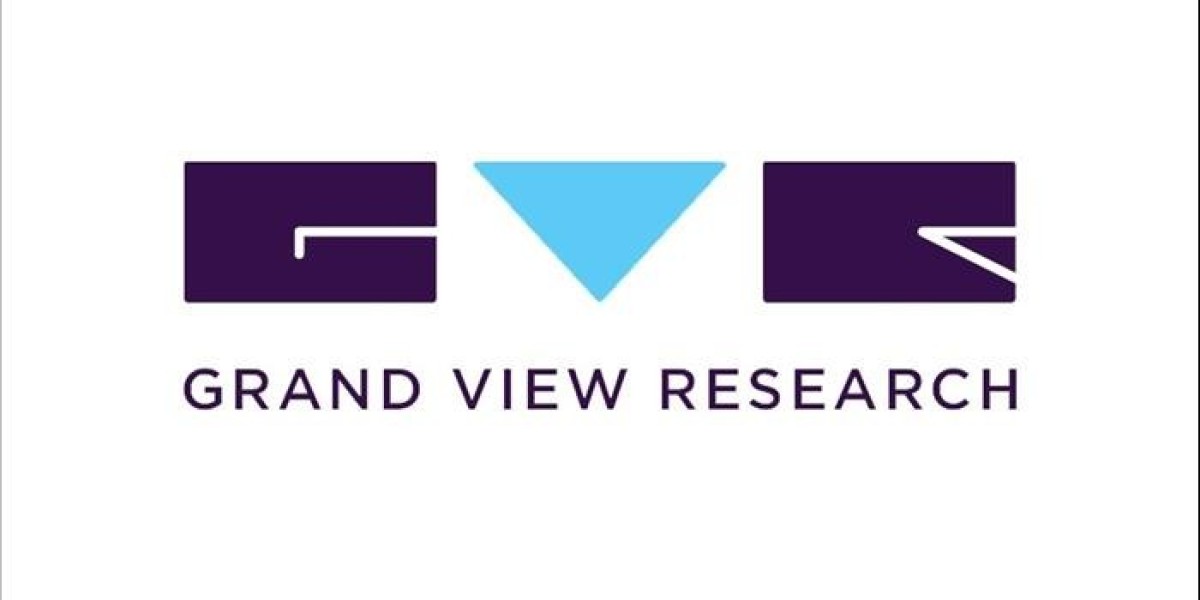Healthcare Information Systems Industry Data Book Covers Hospital Information Systems, Pharmacy Automation Systems, Laboratory Informatics, Revenue Cycle Management Markets.
The global healthcare information systems markets size generated over USD 406.4 billion in 2022 and is expected to grow at a CAGR of 13.3% over the forecast period.
Hospital Information System Market Growth & Trends
The global hospital information system market size is expected to reach USD 405.6 billion by 2030, according to a new report by Grand View Research, Inc. The market is expected to grow at a CAGR of 17.4% from 2023 to 2030. Hospital information systems are being increasingly adopted to improve operational efficiency in the legal, administrative, and financial tasks in hospital facilities, which is one of the key factors driving industry growth. Moreover, increasing awareness about advanced IT services and rising demand to curb the growing healthcare costs are other key drivers of the industry. Several benefits associated with HIS, such as lower healthcare expenditure and higher operational efficiency of the systems, are expected to boost the adoption of IT solutions in healthcare facilities.
Hospital information solutions aid in reducing medical and administration errors. Electronic Health Records (EHRs), electronic medical records, patient engagement solutions, and population health management are the key types of information systems registering high adoption among end-users. The growing need for efficient management of a large volume of healthcare data generated and its accessibility by medical practitioners is also driving market growth. Furthermore, IT companies and healthcare settings are entering into collaborations and partnerships to curb the rising costs, streamline data storage, and effectively use data analytics for better healthcare delivery and outcomes coupled with efficient management and distribution of patient data.
For instance, in August 2022, Augmedix partnered with Adventist, the partnership will provide physicians with automated medical documentation, which will help reduce the burden on the physicians. Increasing initiatives undertaken by various governments to promote the adoption of the HIS are expected to boost the growth of the industry during the forecast period. The increased healthcare spending by the governments globally is also expected to positively contribute to the growth of this industry. For instance, the Australian Government spent USD 98.3 billion in 2021-22.
Electronic Health Records Market Growth & Trends
The global electronic health records market size is expected to reach USD 38.5 billion by 2030, according to a new report by Grand View Research, Inc. The market is expected to expand at a CAGR of 4.1% from 2023 to 2030. The web-based electronic health records (EHRs) are anticipated to show the largest growth during the forecast period. These EHRs are convenient for use in pharmacies, small-scaled laboratories, and clinics, as they require limited hardware infrastructure, which reduces the cost of installation.
EHR vendors and organizations have initiated to help in curbing the pandemic by making telehealth a mainstream alternative, enhancing data access through EHRs, and collaborating to develop COVID-19 dashboards in detail. The introduction of EHRs for medical coding and billing has eased the process as data entering into computerized systems is more convenient than paper-based methods. EHRs also minimize the risk of errors in patient data as well as financial details. As per the University of Michigan, the cost of outpatient care was reduced by 3% upon shifting to EHRs from paper-based records. This reduction resulted in USD 5.14 savings per patient per month.
Additionally, M&A activities by market players are also boosting the market growth. For instance, in February 2021, Evident, LLC, a subsidiary of CPSI announced that Texas-based Curahealth Hospitals and Cobalt Rehabilitation, have selected the Evident EHR along with collection services TruBridge, for three new rehabilitation facilities located in Denver, Colorado; West Houston, Texas; and San Antonio, Texas. Key players in the EHR market are investing in the launch of new products and collaborations for sustaining in the market. For instance, in August 2020, Cerner Corporation collaborated with Amazon to integrate its EHR solutions with the latter’s wearables such as Amazon Halo. This would provide greater interoperability to its customers and strengthen its service portfolio.
Patient Engagement Solutions Market Growth & Trends
The global patient engagement solutions market size is expected to reach USD 70.2 billion by 2030, according to a new report by Grand View Research, Inc. The market is expected to grow at a CAGR of 17.54% from 2023 to 2030. The key factors fueling the market growth include rising digitalization across healthcare, increasing prevalence of chronic conditions, and technological advancements. The COVID-19 pandemic boosted digitalization across healthcare. This, in turn, has fueled the awareness and adoption of patient engagement solutions, thus propelling the market growth.
As healthcare providers were battling with the constant upsurge in cases, patients were looking to digital technologies for care delivery and monitoring. This contributed to the market growth. Various key companies released multiple COVID-19-related features as part of their patient engagement lineup to enhance their offerings. In December 2020, athenahealth released new features to its athenaOne platform-such as scheduling, workflow, documentation, and reporting capabilities-to enable immediate administration of COVID-19 vaccines as and when they become available.
The necessity of social distancing resulted in the demand for remote patient monitoring solutions, along with the prerequisite for the precise and timely exchange of patient wellbeing records. The pandemic has also made healthcare professionals look for alternate methods to traditional processes and systems. As a result, market participants had come up with COVID-19-related features into their existing patient engagement solutions. For instance, in June 2020, Orion Health partnered with a network of more than 350 healthcare facilities called Keystone Health Information Exchange to enable real-time automated COVID-19 reporting for improved public health data collection across Pennsylvania and New Jersey.
As per a survey by Twilio, a provider of cloud communications and customer engagement, 68% of respondents reported accelerated digitalization in their organizations due to COVID-19. Companies reported easing of barriers at organization levels such as getting executive approvals, lack of clear strategy, and reluctance to replace legacy software. In fact, according to the Chief Product Officer at Mount Sinai Health System, their newly developed text‑to‑chat platform witnessed a 10x surge in volume due to the pandemic. The growing number of smartphone users around the globe expedited the adoption of digital health technologies across the sector both from providers and consumers, which, in turn, has augmented the dependability of patients on mHealth apps.
Moreover, in March 2019, the American Medical Association entered into a collaboration with Patient Point with the aim to access point of care to help prevent the occurrence of cardiovascular diseases and type 2 diabetes. Using PatientPoint technology, approximately 6,500 practicing doctors across the U.S. are expected to educate individuals regarding disease prevention. Programs such as these are expected to fuel the market growth over the forecast period.
Access the Global Healthcare Information Systems Industry Data Book, 2022 to 2030, compiled with details like market sizing information & forecasts, trade data, pricing intelligence, competition benchmarking, macro-environmental analyses, and regulatory & technological framework studies
Population Health Management Market Growth & Trends
The global population health management market size is expected to reach USD 280.8 billion by 2030, expanding at a CAGR of 21.94% over the forecast period, according to a new report by Grand View Research, Inc. The healthcare industry is shifting toward the adoption of healthcare IT solutions, including electronic health records (EHR) and population health management (PHM) for value-based compensation. PHM solutions can process clinical, financial, and operational data that help improve efficiency and patient care. The health management program is also witnessing changes in medical reimbursement due to the increasing emphasis on value-based payment models.
Furthermore, PHM assists in the stratification of at-risk population groups and the identification of high-cost diseases. Besides, the increasing use of machine learning and artificial intelligence in analytics is likely to drive the market’s growth. With rapid advancements in technology, PHM is likely to offer a win-win situation for healthcare providers. For instance, the use of data analytics is expected to help reduce costs, increase productivity, and offer improved clinical outcomes.
Furthermore, the key participants are engaged in strategies such as product launches, collaborations, partnerships, and joint ventures among others to expand their global footprints and product portfolio. Alternatively, rising strategic acquisitions, new product launches, and partnerships deals are other factors fueling market expansion.
Pharmacy Automation Devices Market Growth & Trends
The global pharmacy automation devices market size is expected to reach USD 11.6 billion by 2030, expanding at a CAGR of 9.9%, based on a new report by Grand View Research, Inc. This growth can be attributed to the rising adoption of pharmacy automation devices, such as automated dispensing systems, packaging systems, and storage and retrieval systems for pharmaceutical purposes. Pharmacy automation has increased the efficiency and productivity of pharmacies as well as improved patient safety. It reduces the time required for counting, filling, packaging, and labeling of patient prescriptions.
In addition, according to a report published by Omnicell Inc., 75% of the pharmacist’s time is spent on nonclinical operations, such as order review & verification (41%), drug distribution (19%), administrative management (8%), education & other (7%), and clinical (25%). Through automation, pharmacists can spend more time on patient care. Moreover, it helps to prevent product contamination and errors, thereby reducing the risk of liabilities and increasing patient safety.
The COVID-19 pandemic has significantly impacted the market. Many pharmacy automation players witnessed a decline in revenue from the second quarter of 2020 owing to the COVID-19 pandemic. For instance, Omnicell Inc. witnessed a decline in its revenue by -0.13% in the second quarter of 2020. However, the pandemic has exposed gaps and challenges across the pharmacy supply chain, making more sophisticated automation and intelligence capabilities critical to effectively manage medications in the post-COVID world.
Laboratory Informatics Market Growth & Trends
The global laboratory informatics market size is expected to reach USD 4.9 billion by 2030, according to a new report by Grand View Research, Inc. The market is expected to expand at a CAGR of 4.9% from 2023 to 2030. Increasing requirements for life sciences companies to comply with regulatory demands has further promoted the incorporation of Laboratory Information Management Systems (LIMS) as it helps professionals understand and fulfill complex regulatory obligations. Furthermore, demand for cost-efficient workflow management systems is anticipated to drive the market over the forecast period. The rising adoption of LIMS solutions by biobanks, coupled with the increasing demand for integrated healthcare solutions, is the key factor contributing to the growth of the market. In addition, growing awareness levels amongst the end-use segments and the technological evolution of LIMS solutions are anticipated to fuel the growth in the coming years.
Demand for fully integrated LIMS platforms is growing in accordance with the requirements of the life sciences and research industries to reduce the incidence of errors in data management and improve the qualitative analysis of research information. The above-mentioned factors are expected to drive the LIMS product segment. Associated benefits of ECM such as database management of large unstructured or structured medical information and supportive government initiatives are expected to contribute to the lucrative growth of the ECM product segment over the forecast period. The introduction of technologically advanced software solutions and their widespread adoption by the healthcare IT providers are expected to impede the growth of the on-premise delivery mode segment over the forecast period. Furthermore, advantages associated with its usage, including remote access to information, reduced operational cost, and real-time data tracking, are contributing to its rising demand.
The outbreak of the coronavirus has resulted in a shutdown of laboratories around the world. Movement restrictions have created a logistical problem for players, resulting in the shortage of on-premise delivery of products. However, the high demand for COVID-19 testing scaled up laboratory operations and created new challenges like the administration of a large volume of patient specimens and test data. To accelerate the high demand for COVID-19 tests, a LIMS plays an essential role in labs, which led to the implementation of the product. For instance, the Matrix Covid LIMS is pre-configured for fast deployment into laboratories executing Covid testing. This solution has already been installed in numerous clinical diagnostic laboratories to drive productivity and support the identification of COVID-19 positive cases.
Increased emphasis on big data usage and modeling in research projects and the introduction of artificial intelligence and machine learning in healthcare are playing a key role in the market growth. Another facet of access to lots of organized data is data visualization. Presenting the facts in innovative and diverse ways leads to insights that may not have been possible in the past years. Data visualization tools such as Tableau and Spotfire are making this easier to do in the laboratory. Thus, market players are also investing in it to stay ahead in the competition. For instance, in August 2021, IDBS and Tableau publicized a strategic corporation to integrate Tableau into the IDBS suite of products. The partnership will enhance IDBS’s product offerings. These initiatives are anticipated to boost the market growth over the forecast period.
Revenue Cycle Management Market Growth & Trends
The global revenue cycle management market size is expected to reach USD 658.7 billion by 2030, according to a new report by Grand View Research, Inc. The market is expected to expand at a CAGR of 11.5% from 2023 to 2030. Growing digitalization of healthcare is driving organizations to adopt healthcare IT solutions such as revenue cycle management (RCM) systems. Unorganized data siloes generated from multiple healthcare functionalities and the increasing need to streamline workflows to enhance productivity and efficiency are driving the adoption of RCM systems and propelling market growth.
The existing healthcare systems are transitioning and readily adopting electronic processes for claims management, coding, and reimbursements. The growing digital literacy across the globe and increasing healthcare IT spending coupled with technological advancements in healthcare infrastructure are anticipated to boost the market growth. Rising demand for workflow optimization and favorable regulatory support from government bodies is shaping development and growth. Transforming healthcare systems and constant technological advancements are driving key players to focus on their innovative product development strategies to enhance the patient-provider relationship in healthcare facilities.
Market players are focusing on partnerships and technological collaborations with other players to expand their business footprint and grow their clientele. For instance, in January 2020, Professional Recovery Consultants (PRC) and Continuum Health Technologies entered into a partnership to improve healthcare claims denial management. This partnership includes the combination of PRC’s advanced claims services with Continuum Health Technologies’ proprietary software-Patient Estimator and Denial Challenger-which automate follow-ups on active receivables, reduce claim denials, and offer pricing transparency during the claim’s lifecycle. The partnership is expected to offer healthcare providers a cost-effective and automatic way of managing the collection process, along with providing pricing transparency to patients and the industry as a whole.
Similarly, key players are launching innovative product solutions to expand their product portfolio and cater to the growing global demand. For instance, in February 2020, Waystar Health inaugurated Hubble, which is an AI/RPA platform used for automating revenue cycle processes. The Hubble platform increases revenue capture with the help of advanced machine learning and predictive analytics algorithms, which automatically recognize DRG anomalies, missing charges, and coding variances, based on a company’s past charging practice, generating millions of net revenues for its clients every year.
Order your copy of the Free Sample of “Healthcare Information Systems Industry Data Book - Hospital Information Systems, Pharmacy Automation Systems, Laboratory Informatics, Revenue Cycle Management Market Size, Share, Trends Analysis, And Segment Forecasts, 2023 - 2030” Data Book, published by Grand View Research
Growth & Trends
Competitive Landscape
Key players operating in the healthcare information systems industry are –
- athenahealth, Inc.
- Philips Healthcare
- Agfa Gevaert Group
- McKesson Corporation
- Epic Systems Corporation
- Allscripts Healthcare, LLC
- Cerner Corporation
- GE Healthcare
- Hewlett Packard
- Agfa Gevaert Group
Grand View Research’s healthcare information systems industry data book is a collection of market sizing information & forecasts, regulatory data, reimbursement structure, competitive benchmarking analyses, macro-environmental analyses, and regulatory & technological framework studies. Within the purview of the database, all such information is systematically analyzed and provided in the form of presentations and detailed outlook reports on individual areas of research.
Go through the table of content of Healthcare Information Systems Industry Data Book to get a better understanding of the Coverage & Scope of the study
About Grand View Research
Grand View Research, U.S.-based market research and consulting company, provides syndicated as well as customized research reports and consulting services. Registered in California and headquartered in San Francisco, the company comprises over 425 analysts and consultants, adding more than 1200 market research reports to its vast database each year. These reports offer in-depth analysis on 46 industries across 25 major countries worldwide. With the help of an interactive market intelligence platform, Grand View Research helps Fortune 500 companies and renowned academic institutes understand the global and regional business environment and gauge the opportunities that lie ahead.
Contact:
Sherry James
Corporate Sales Specialist, USA
Grand View Research, Inc.
Phone: 1-415-349-0058
Toll Free: 1-888-202-9519
Email: sales@grandviewresearch.com








